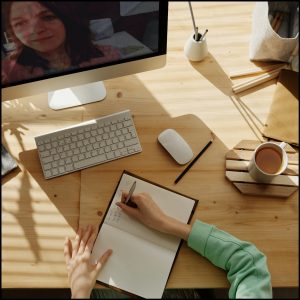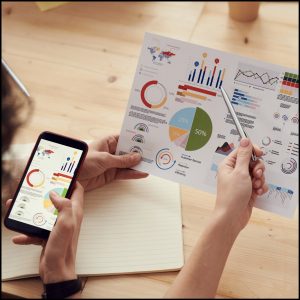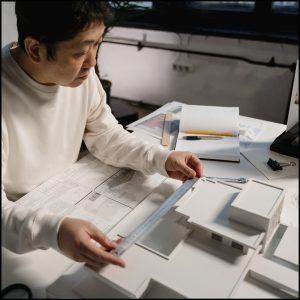 Learning is a complex and multifaceted process that involves not only your cognitive abilities, but also your physical, emotional, and social well-being. How you learn depends on many factors, such as your motivation, interest, prior knowledge, goals, and feedback. However, one factor that is often overlooked is the learning environment, or the physical or virtual space where you study and learn.
Learning is a complex and multifaceted process that involves not only your cognitive abilities, but also your physical, emotional, and social well-being. How you learn depends on many factors, such as your motivation, interest, prior knowledge, goals, and feedback. However, one factor that is often overlooked is the learning environment, or the physical or virtual space where you study and learn.
The learning environment can have a significant impact on your learning speed, or how quickly and effectively you can acquire, retain, and apply new knowledge and skills. A well-designed learning environment can enhance your attention, concentration, memory, comprehension, motivation, and engagement. On the other hand, a poorly designed learning environment can distract you, disrupt your focus, impair your recall, confuse you, demotivate you, and bore you.
So how can you design your learning environment to boost your learning speed? Here we share some tips and strategies that are seldom considered and not typically discussed, strategies that go beyond a narrow definition of “environment”. We also provide you with step-by-step guides on how to design your learning environment.
Why Is the Learning Environment Important for Learning Speed?
Before we dive into the tips and strategies, let us first understand why the learning environment is important for learning speed. According to the theory of situated cognition, learning is not just a mental process that happens in isolation from the context. Rather, learning is situated in the physical and social environment where it occurs. This means that the characteristics of the environment can influence how you perceive, process, store, and retrieve information.
 For example, imagine that you are studying for a biology exam in a noisy cafeteria. The noise from the conversations, music, and clattering dishes can interfere with your ability to focus on the material and encode it into your long-term memory. Moreover, the cafeteria may not be an appropriate place to simulate the test environment where you will have to recall the information under quiet and timed conditions. Therefore, studying in a noisy cafeteria may impair your learning speed and performance.
For example, imagine that you are studying for a biology exam in a noisy cafeteria. The noise from the conversations, music, and clattering dishes can interfere with your ability to focus on the material and encode it into your long-term memory. Moreover, the cafeteria may not be an appropriate place to simulate the test environment where you will have to recall the information under quiet and timed conditions. Therefore, studying in a noisy cafeteria may impair your learning speed and performance.
On the other hand, imagine that you are studying for a biology exam in a quiet library. The library provides a conducive environment for concentration and memory consolidation. Moreover, the library may be a similar place to where you will take the test, which can enhance your retrieval cues and reduce test anxiety. Therefore, studying in a quiet library may improve your learning speed and performance.
These examples illustrate how the learning environment can affect your learning speed through various mechanisms, such as attention, memory, transfer, and emotion. In general, a well-designed learning environment can boost your learning speed by:
- Reducing distractions and increasing focus
- Providing optimal levels of arousal and challenge
- Supporting multiple modalities and sensory inputs
- Enhancing memory encoding and retrieval
- Facilitating transfer of learning to new situations
- Fostering positive emotions and motivation
- Encouraging active engagement and interaction
- Promoting self-regulation and metacognition
Tips and Strategies for Designing Your Learning Environment
Now that you know why the learning environment is important for learning speed, let us look at some tips and strategies for designing your learning environment. These tips and strategies are based on research and best practices from experts in the fields of education, psychology, and design.
Tip 1: Choose a Location That Suits Your Needs and Preferences
 The first step in designing your learning environment is to choose a location that suits your needs and preferences. Depending on your situation, you may have different options for where to study, such as your bedroom, dorm room, living room, library, coffee shop, or park. Each location has its own advantages and disadvantages, so you need to consider the following factors when choosing a location:
The first step in designing your learning environment is to choose a location that suits your needs and preferences. Depending on your situation, you may have different options for where to study, such as your bedroom, dorm room, living room, library, coffee shop, or park. Each location has its own advantages and disadvantages, so you need to consider the following factors when choosing a location:
- Noise level: Some people prefer a quiet environment to study, while others like some background noise or music. If you are easily distracted by noise, choose a location that is relatively quiet or use noise-canceling headphones. If you enjoy some ambient sound, choose a location that has a moderate level of noise or use a white noise app or playlist.
- Comfort level: You want to be comfortable when you study, but not too comfortable that you fall asleep or lose focus. Choose a location that has a comfortable chair, desk, and temperature. Avoid studying on your bed, couch, or floor, as these places may make you feel too relaxed or cause back pain. Also, avoid studying in a location that is too hot or cold, as these temperatures may affect your concentration and mood.
- Accessibility: You want to have easy access to everything you need before you start studying, such as your books, notes, laptop, charger, pens, paper, snacks, water, etc. Choose a location that has enough space and storage for your study materials and supplies. Avoid studying in a location that requires you to constantly get up and move around to get what you need, as this may interrupt your flow and waste your time.
- Distractions: You want to minimize distractions when you study, such as your phone, social media, TV, games, friends, family, pets, etc. Choose a location that has few or no distractions or use tools and strategies to block them out. For example, you can turn off your phone notifications, use a website blocker app or extension, tell your friends and family not to disturb you during your study time, or put a sign on your door that says, “Do not disturb”.
Tip 2: Experiment with Lighting
 The second step in designing your learning environment is to experiment with lighting. Lighting can have a significant impact on your learning speed by affecting your vision, mood, alertness, and circadian rhythm. Here are some tips for experimenting with lighting:
The second step in designing your learning environment is to experiment with lighting. Lighting can have a significant impact on your learning speed by affecting your vision, mood, alertness, and circadian rhythm. Here are some tips for experimenting with lighting:
- Use natural light: Natural light is the best type of light for studying because it is bright, clear, and healthy. Natural light can improve your vision, mood, alertness, and memory. Try to study near a window or outside during the day when there is enough natural light. Avoid studying in a dark or dimly lit room or under fluorescent lights that can cause eye strain, headaches, fatigue, and depression.
- Adjust the brightness: The brightness of the light should match the brightness of your screen or paper. If the light is too bright or too dim compared to what you are looking at, it can cause eye strain and difficulty focusing. Adjust the brightness of the light by using curtains, blinds, shades, lamps, or dimmers. You can also adjust the brightness of your screen by using the settings on your device or using an app or extension that automatically adjusts it according to the time of day.
- Change the color temperature: The color temperature of the light refers to how warm or cool it looks. Warm light has more red and yellow tones and looks like fire or sunset. Cool light has more blue and white tones and looks like daylight or moonlight. The color temperature of the light can affect your mood and circadian rhythm. Warm light can make you feel relaxed and sleepy while cool light can make you feel alert and energetic. Change the color temperature of the light according to your preference and purpose. For example,
-
- If you want to study in the morning or afternoon when you need to be alert and focused, use cool light that mimics daylight.
- If you want to study in the evening or night when you need to wind down and prepare for sleep, use warm light that mimics sunset.
Tip 3: Support Multiple Modalities and Sensory Inputs
The third step in designing your learning environment is to support multiple modalities and sensory inputs. Modalities refer to how you learn best by using different senses such as sight (visual), sound (auditory), touch (tactile), movement (kinesthetic), etc. Sensory inputs refer to the stimuli that you receive from your environment through your senses such as colors, shapes, textures, sounds, smells, etc. Supporting multiple modalities and sensory inputs can boost your learning speed by enhancing your attention, memory, comprehension, and engagement. Here are some tips for supporting multiple modalities and sensory inputs:
Use visual aids
 Visual aids are tools that help you see and understand the information better, such as graphs, charts, diagrams, pictures, videos, etc. Visual aids can improve your attention, memory, comprehension, and engagement by making the information more concrete, meaningful, and appealing. You can create your own visual aids by using apps or software that allow you to draw, sketch, or design.
Visual aids are tools that help you see and understand the information better, such as graphs, charts, diagrams, pictures, videos, etc. Visual aids can improve your attention, memory, comprehension, and engagement by making the information more concrete, meaningful, and appealing. You can create your own visual aids by using apps or software that allow you to draw, sketch, or design.
Examples of visual aids that you can use to enhance your learning:
- Graphs and Charts: Visual representations of data can make complex information easier to grasp. For instance, if you’re studying economics, you might use a line graph to illustrate changes in GDP over time or a pie chart to show the distribution of wealth.
- Diagrams: Diagrams are excellent for understanding processes, systems, or structures. In biology, you could use a diagram to illustrate the different parts of a cell or in engineering, a flowchart to represent a manufacturing process.
- Infographics: Infographics combine text and visuals to present information in a concise and engaging way. They are often used to explain statistics, trends, or complex concepts. For example, you might create an infographic to summarize key facts about a historical event.
- Images and Pictures: Visual aids can include photographs, illustrations, or images from textbooks or online sources. These can be particularly useful in subjects like art history, where you might analyze and discuss different art pieces.
- Videos: Videos can provide dynamic visual content to reinforce your learning. For instance, if you’re studying astronomy, you could watch a video that shows the motion of planets in our solar system.
- Mind Maps: Mind maps are graphical representations of ideas or concepts, with a central topic branching out into subtopics. They are great for organizing your thoughts and making connections between related concepts.
- Flashcards: While they may seem simple, flashcards are highly effective for memorization. You can create flashcards with words, definitions, equations, or images, and use them for self-quizzing.
- Interactive Simulations: Some subjects benefit from interactive simulations or virtual labs. Physics students, for example, might use a virtual physics lab to conduct experiments online.
- Timelines: Timelines are ideal for understanding historical events or sequences of events. You can create a timeline to visualize the chronological order of important events in history, literature, or science.
- Concept Maps: Similar to mind maps, concept maps help you visualize the relationships between different ideas or concepts. They can be especially useful for studying subjects with intricate interconnections, like psychology or sociology.
- Color Coding: Even something as simple as color-coding notes or highlighting key points in your textbooks can serve as a visual aid. Different colors can represent different categories or emphasize important information.
Use auditory aids
 Auditory aids are tools that help you hear and understand the information better, such as podcasts, audiobooks, lectures, music, etc. Auditory aids can make the information more lively, expressive, and emotional. You can create your own auditory aids by using apps or software that allow you to record, edit, or mix audio.
Auditory aids are tools that help you hear and understand the information better, such as podcasts, audiobooks, lectures, music, etc. Auditory aids can make the information more lively, expressive, and emotional. You can create your own auditory aids by using apps or software that allow you to record, edit, or mix audio.
Examples of auditory aids that can enhance your learning:
- Podcasts: Educational podcasts cover a wide range of topics, from science and history to language learning and self-improvement. They often feature experts and engaging discussions, making complex subjects more accessible. For instance, if you’re studying literature, you might listen to a podcast that analyzes classic novels and their themes.
- Audiobooks: Audiobooks are a valuable resource for students who prefer auditory learning. You can find audiobooks for most textbooks and literature, allowing you to absorb information while on the go. Listening to an audiobook can be particularly helpful for literature classes, where you can follow along with the narration.
- Lectures and Speeches: Many educational institutions offer recorded lectures or speeches by professors, scholars, or experts in various fields. These can provide in-depth explanations and insights on course material. For example, you might access a lecture series on philosophy to deepen your understanding of key philosophical concepts.
- Music: While not always associated with traditional learning, music can enhance your study environment. Some students find that instrumental music or specific genres like classical or ambient can improve focus and concentration. It can also be used to create a calming atmosphere while studying.
- Language Learning Apps: Language learning apps often incorporate auditory aids by providing pronunciation guides, interactive conversations, and listening exercises. These aids are crucial for developing language skills, helping you become more fluent and proficient.
- Dictation Software: Some students benefit from using dictation software to transcribe and organize their thoughts or class notes. This can be particularly helpful for those who have difficulty with handwriting or typing.
- Voice Notes and Recordings: You can use voice recording apps on your smartphone or computer to create your own auditory aids. This is useful for capturing lectures, brainstorming sessions, or summarizing key points in your own words. Later, you can listen to these recordings for review.
- Study Groups and Discussions: Engaging in study groups or discussions with peers can be a valuable auditory aid. Explaining concepts or debating ideas out loud can solidify your understanding and help you remember information better.
- White Noise and Nature Sounds: Some students prefer background white noise or nature sounds to create a productive study environment. These auditory aids can drown out distractions and improve concentration.
- Sound Effects: In subjects like physics or engineering, sound effects can be used to demonstrate concepts related to waves, vibrations, and acoustics. Interactive simulations or software may incorporate sound effects to aid in understanding.
Use tactile aids
 Tactile aids are tools that help you touch and understand the information better, such as models, manipulatives, puzzles, games, etc. Tactile aids make the information you’re trying to learn more interactive, physical, and fun. You can create your own tactile aids by using materials or objects that you have at home or in your environment.
Tactile aids are tools that help you touch and understand the information better, such as models, manipulatives, puzzles, games, etc. Tactile aids make the information you’re trying to learn more interactive, physical, and fun. You can create your own tactile aids by using materials or objects that you have at home or in your environment.
Examples of tactile aids that can enhance your learning:
- 3D Models: Three-dimensional models can help you visualize complex structures or objects in subjects like biology, geology, and architecture. For instance, a 3D model of the human heart can provide a hands-on understanding of its anatomy.
- Manipulatives: These are physical objects designed for hands-on learning. In mathematics, manipulatives like counters, base-ten blocks, and geometric shapes can help you grasp abstract concepts through tangible experiences.
- Puzzles: Jigsaw puzzles, tangram puzzles, and logic puzzles are excellent tactile aids. They encourage problem-solving and critical thinking skills, and they can be used in various subjects, from mathematics to literature.
- Board Games: Educational board games and card games can make learning enjoyable and interactive. Games like Scrabble can improve your vocabulary, while strategy games like chess enhance your critical thinking.
- Art Supplies: If you’re studying art, using tactile aids like clay, paint, or sculpting materials can help you experiment with different techniques and create physical representations of your artistic ideas.
- Geographical Maps and Globes: Geography becomes more tangible with the use of tactile aids like maps and globes. These aids can help you explore the physical features of different regions, study topography, and understand geopolitical boundaries.
- Math and Science Kits: Specialized kits are available for various scientific experiments and mathematical concepts. For example, a chemistry set can provide hands-on experience with chemical reactions, while an electronics kit can help you understand circuits and electricity.
- Braille and Tactile Graphics: For individuals with visual impairments, tactile aids like Braille books and tactile graphics provide essential access to written information. These aids are crucial for learning across various subjects.
- Construction Sets: Building toys like LEGO or K’NEX can enhance spatial reasoning, creativity, and problem-solving skills. They’re versatile and can be used to create models related to architecture, engineering, or even storytelling.
- Historical Replicas: In history classes, tactile aids like historical replicas of artifacts, weapons, or clothing can transport you to a different time period, making history come alive.
- Sensory Materials: Some tactile aids focus on sensory exploration, such as textured materials, sensory bins, or sensory balls. These aids can be particularly useful for young learners or individuals with sensory processing needs.
- Plant and Garden Kits: Botany and ecology students can benefit from planting and tending to real plants. Gardening kits provide a tactile way to understand concepts related to plant growth, ecosystems, and sustainability.
- Physical Models of Molecules: In chemistry, physical models of molecules made from atoms and connectors allow you to build and visualize molecular structures, aiding in understanding chemical bonding and reactions.
- LEGO Mindstorms: These robotics kits allow students to build and program robots, promoting hands-on learning in engineering, computer science, and robotics.
Use kinesthetic aids
 Kinesthetic aids are tools that help you move and understand the information better, such as gestures, actions, experiments, etc. Kinesthetic aids can make the information more dynamic, practical, and experiential.
Kinesthetic aids are tools that help you move and understand the information better, such as gestures, actions, experiments, etc. Kinesthetic aids can make the information more dynamic, practical, and experiential.
Examples of kinesthetic aids that can enhance your learning:
- Role-Playing and Simulation Games: In subjects like history, sociology, or psychology, you can engage in role-playing activities or simulation games to better understand historical events, human behavior, or complex social systems. These activities allow you to “experience” the subject matter firsthand.
- Hands-On Science Experiments: Performing experiments in subjects like physics, chemistry, and biology is a classic example of kinesthetic learning. These experiments allow you to observe and interact with real-world phenomena, reinforcing theoretical concepts.
- Physical Models: Much like 3D models for tactile learning, physical models can be used for kinesthetic learning. For example, you can assemble a model of the solar system or construct a working volcano model to understand geological processes.
- Physical Activity Breaks: Incorporating short physical activity breaks during study sessions can boost your energy and engagement. Simple movements like stretching, jumping jacks, or yoga poses can help you stay alert and focused.
- Educational Apps and Games: Some educational apps and games are designed to promote kinesthetic learning. For instance, apps that use motion sensors or augmented reality (AR) can make learning math or geography more interactive and physical.
- Interactive Science Kits: Specialized science kits offer hands-on experiences in specific scientific fields. For example, a physics kit might include experiments related to motion, forces, and energy, allowing you to actively explore physics concepts.
- Art and Craft Projects: Creating art and craft projects related to your coursework can help you internalize concepts. For instance, in history, you could create a diorama depicting a historical event or build a scale model of an architectural masterpiece in an art history class.
- Physical Demonstrations: In subjects like mathematics or geometry, physical demonstrations using props like rubber bands, geometric shapes, or string can help illustrate mathematical principles and relationships.
- Role-Based Learning: In literature or drama classes, you can act out scenes from plays or novels to understand character motivations, themes, and dialogue in a more tangible way.
- Field Trips: Going on educational field trips to museums, historical sites, or scientific institutions allows you to engage with the subject matter in a real-world context. These experiences can be memorable and enriching.
- Hands-On Coding: If you’re studying computer science or programming, hands-on coding exercises and projects provide a kinesthetic way to learn coding languages and algorithms.
- Physical Models of Geographical Features: For geography or geology, you can create physical models of landscapes, mountains, and river systems to understand geographical features and processes.
- Sports and Kinesthetic Mnemonics: Creating mnemonic devices that involve physical movements or actions can help you remember information better. For example, you might use hand gestures to recall a sequence of historical events.
- Physical Timelines: Building a physical timeline of historical events using cards or posters can provide a kinesthetic understanding of chronological order and historical context.
Conclusion
Designing your learning environment to boost your learning speed can have a profound impact on your cognitive processes. By choosing a suitable location, experimenting with lighting, and supporting multiple modalities and sensory inputs, you can create an environment that enhances your attention, memory, comprehension, and engagement. Incorporating tactile and kinesthetic aids further enriches your learning experiences by making the information more interactive, dynamic, and memorable. In essence, the design of your learning environment is a powerful tool that can significantly improve your learning speed and overall academic success. By implementing the tips and strategies outlined in this guide, you are well-equipped to embark on a journey of accelerated learning and personal growth.
Next Steps
 You have just taken your first step toward boosting your learning speed! Now it’s time to put these tips into action. You might not be able to start redesigning your learning environment right this second, but you can psychologically solidify your commitment to action. Here are some next steps you can take right now:
You have just taken your first step toward boosting your learning speed! Now it’s time to put these tips into action. You might not be able to start redesigning your learning environment right this second, but you can psychologically solidify your commitment to action. Here are some next steps you can take right now:
- Follow us on social media (Facebook, X/Twitter, Instagram, TikTok, & Reddit) to join the conversation and share your thoughts and experiences with us and other readers.
- Leave a comment below and let us know what you think about this article. What area of your learning environment are you going to redesign first? Do you have any questions or suggestions for us?
- Share this blog post with your friends, family, classmates, or colleagues who might be interested in or benefit from it.
- Check out our other blog posts on Paladinsane’s World that cover various topics related to education and well-being such as study skills, time management, stress management, motivation, etc.
Thank you for reading Paladinsane’s World!

